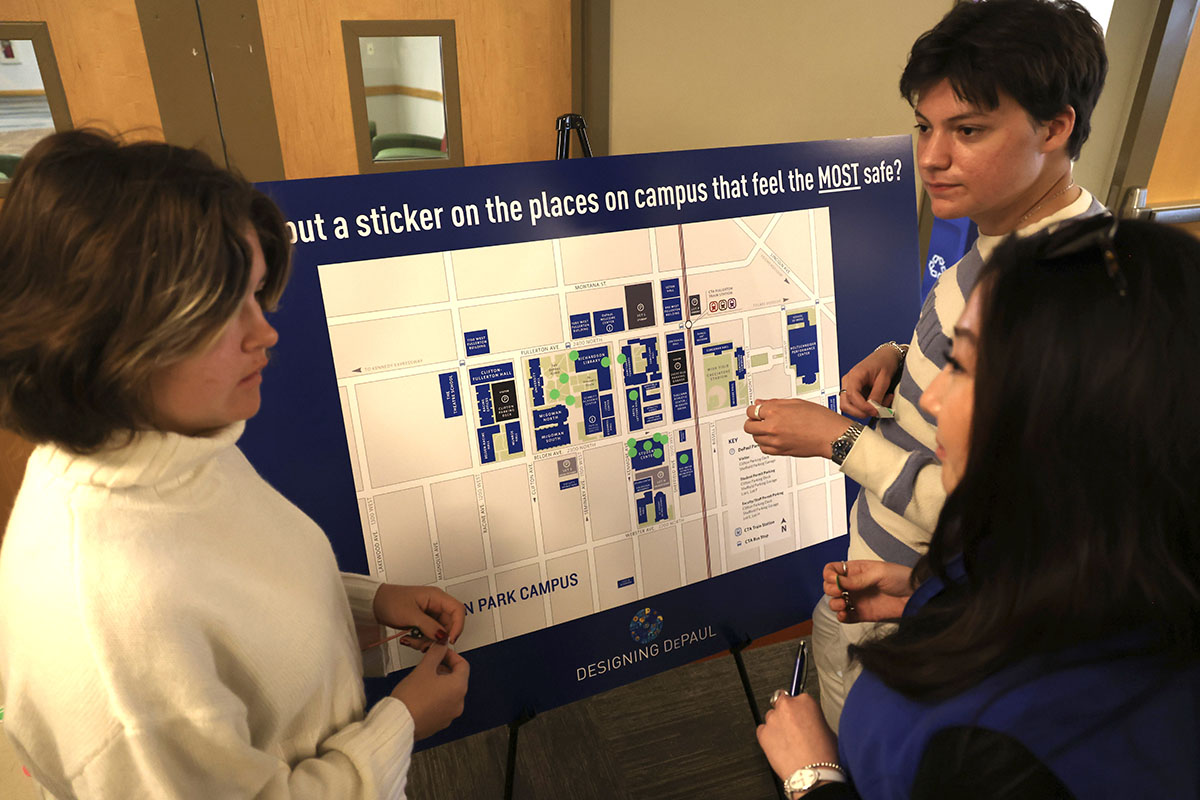 (Photo by Jeff Carrion/DePaul University)
(Photo by Jeff Carrion/DePaul University)
On Thursday, 157 students, faculty and staff gathered at the Campus Safety Summit with city partners to better understand the current safety environment across DePaul’s campuses. The summit offered a venue for attendees to openly discuss their perspective on both safety issues and solutions.
“This is our commitment to a long-term conversation about how we maintain, design and keep public safety at the forefront of our thinking,” President Robert L. Manuel said at the gathering.
Representatives from the Chicago Police Department, Chicago Transit Authority, and the offices of Ald. Timmy Knudsen and Ald. Brian Hopkins attended to share insights on current crime trends and how they partner with DePaul.
The university community identified safety as a clear priority during Designing DePaul sessions last academic year. In the
preliminary report released at Academic Convocation, university leaders committed to updating and implementing a university-wide safety and security approach. Today, DePaul took an important step to meeting that challenge.
Feedback and comments from attendees at the summit will be posted online and incorporated into a report that will guide the development of a comprehensive campus security approach. For those who were not able to attend and wanted to provide feedback, the DePaul community will receive a campus safety survey via email.
A collaborative approach to improving safety
DePaul’s strong partnerships with Chicago civic institutions as well as collaboration among university partners are essential to maintaining and improving safety. This was clear as attendees heard from Director of Public Safety Bob Wachowski, Vice President for Student Affairs Eugene Zdziarski, Chicago Police Commanders Michael Barz and Joe Bird, and Chicago Transit Authority Vice President for Security Kevin Ryan.
“We all have a stake in the safety of this community. And everyone here has input and I want to hear it,” said Barz, who leads the 18th District that includes the Lincoln Park Campus. In discussing recent robberies, he shared that the police department has a citywide task force on robberies and many of the characteristics of the crimes are similar. He also offered
tips, such as avoiding walking alone particularly in the overnight hours when most robberies happen.
Bird, who oversees security on public transit for CPD, emphasized that violent crime on the public transit system is trending down. However, he acknowledged that perception is important too. He discussed how the police department, CTA and other partners have increased security on trains and buses, both with police officers and private security personnel.
“We do have limited resources, but I want a visible presence at the Fullerton Station when students are coming to this campus,” Bird said. “We are trying to put someone there every single day, Monday through Friday.”
Actionable feedback gathered
Participants spent most of the summit providing feedback on key questions around public safety. In small groups students, faculty and staff discussed whether DePaul should remain an open campus, and to what degree. Many offered ideas on safety-related improvements the university should consider. Ideas included added security in Loop Campus buildings, vibrant and welcoming public spaces on campus, and empowering people to take care of each other.
Attendees weighed in on where they feel most and least safe on campus by adding green and pink stickers to campus maps. They also shared what resources they currently use to stay safe. Among the common answers were transportation options like the
Vinnie Van and
escort service, swipe-access to residence halls and blue call boxes throughout campus.
The feedback gathered at the summit as well as in the forthcoming campus survey will be shared with the community on the
Designing DePaul website. The information will guide how DePaul develops its five-year financial plan.
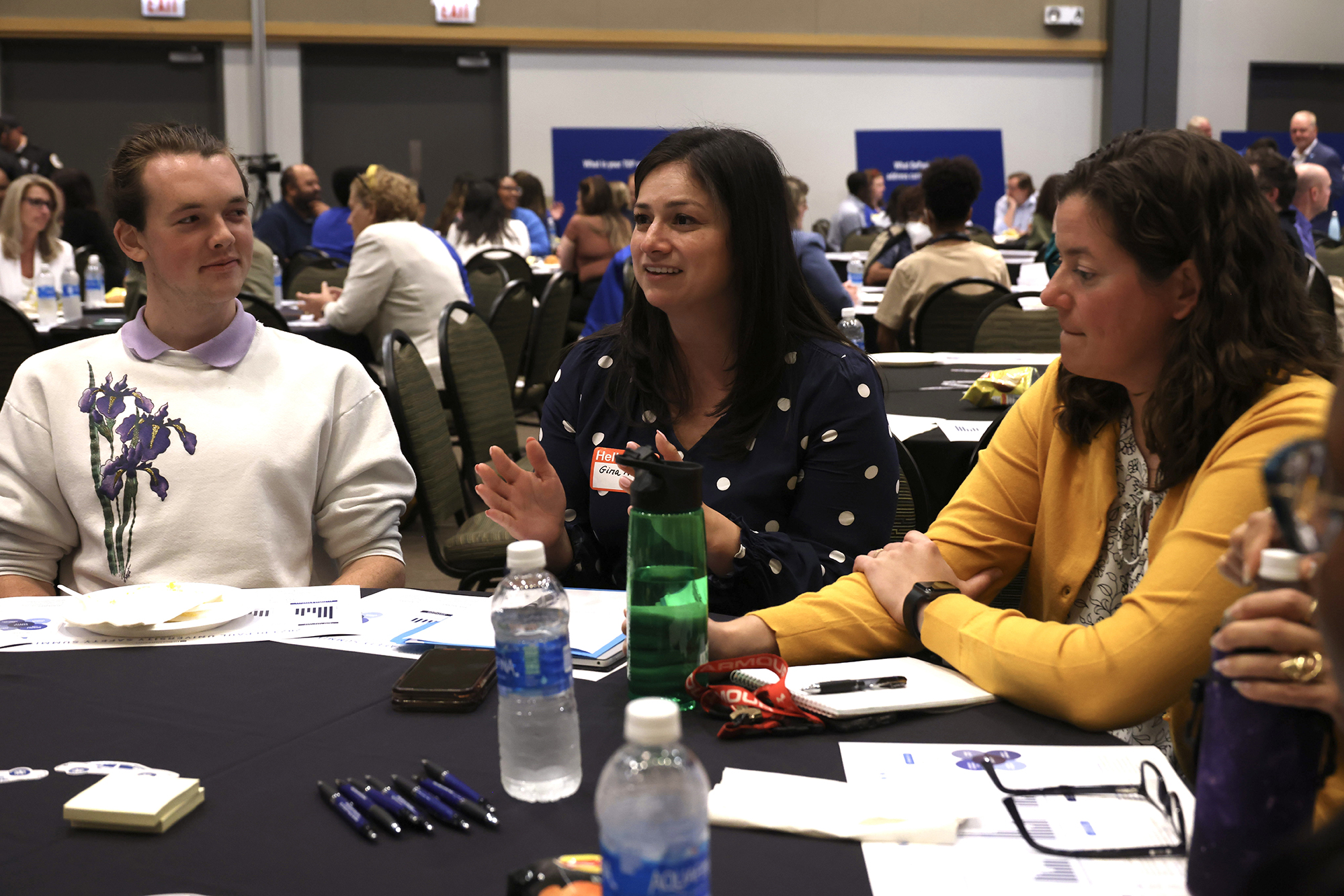
Facilitators gathered feedback, which will inform ongoing work to improve safety on campus. (Photos by Jeff Carrion/DePaul University)
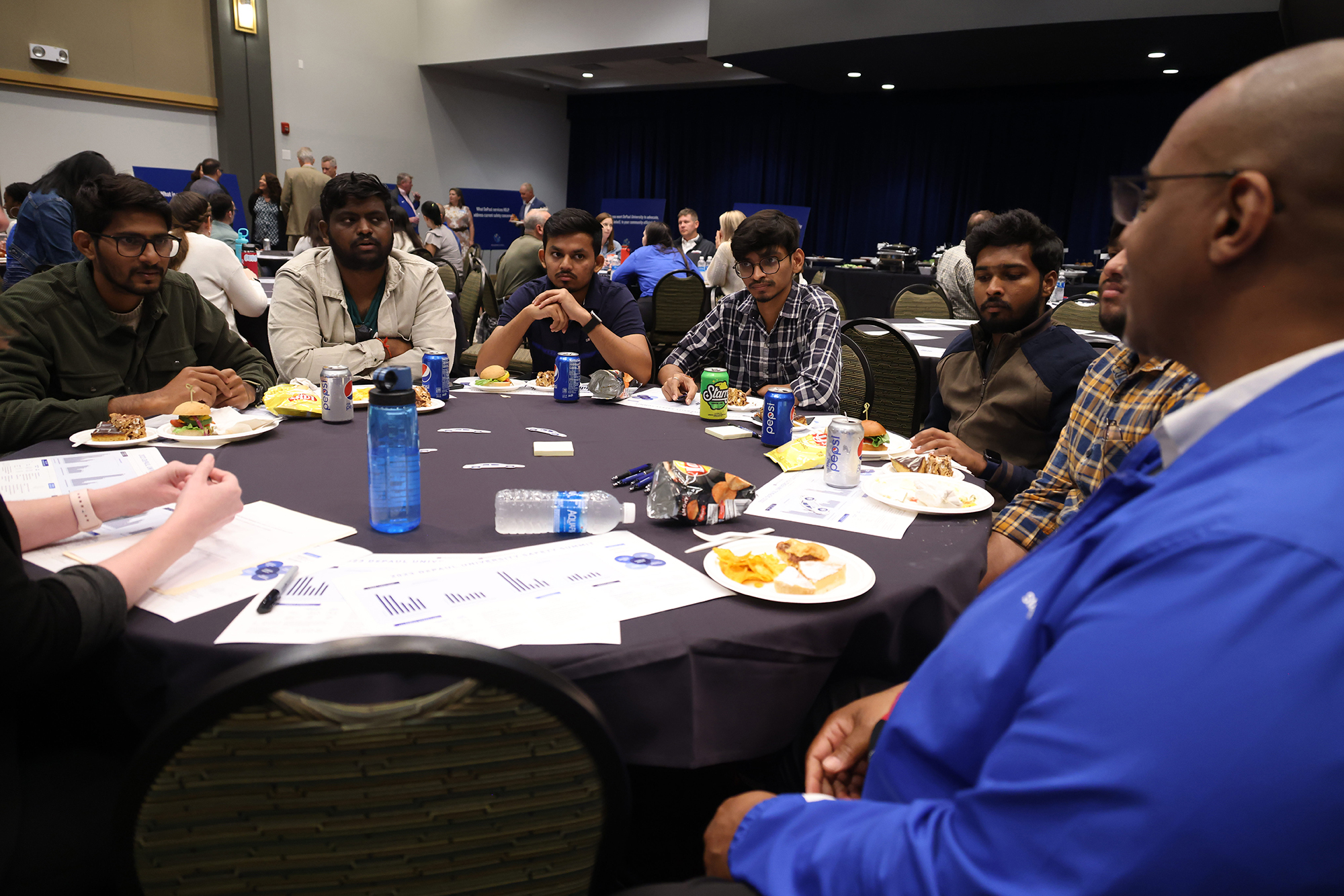
Students, faculty and staff gather for discussion at the Safety Summit.
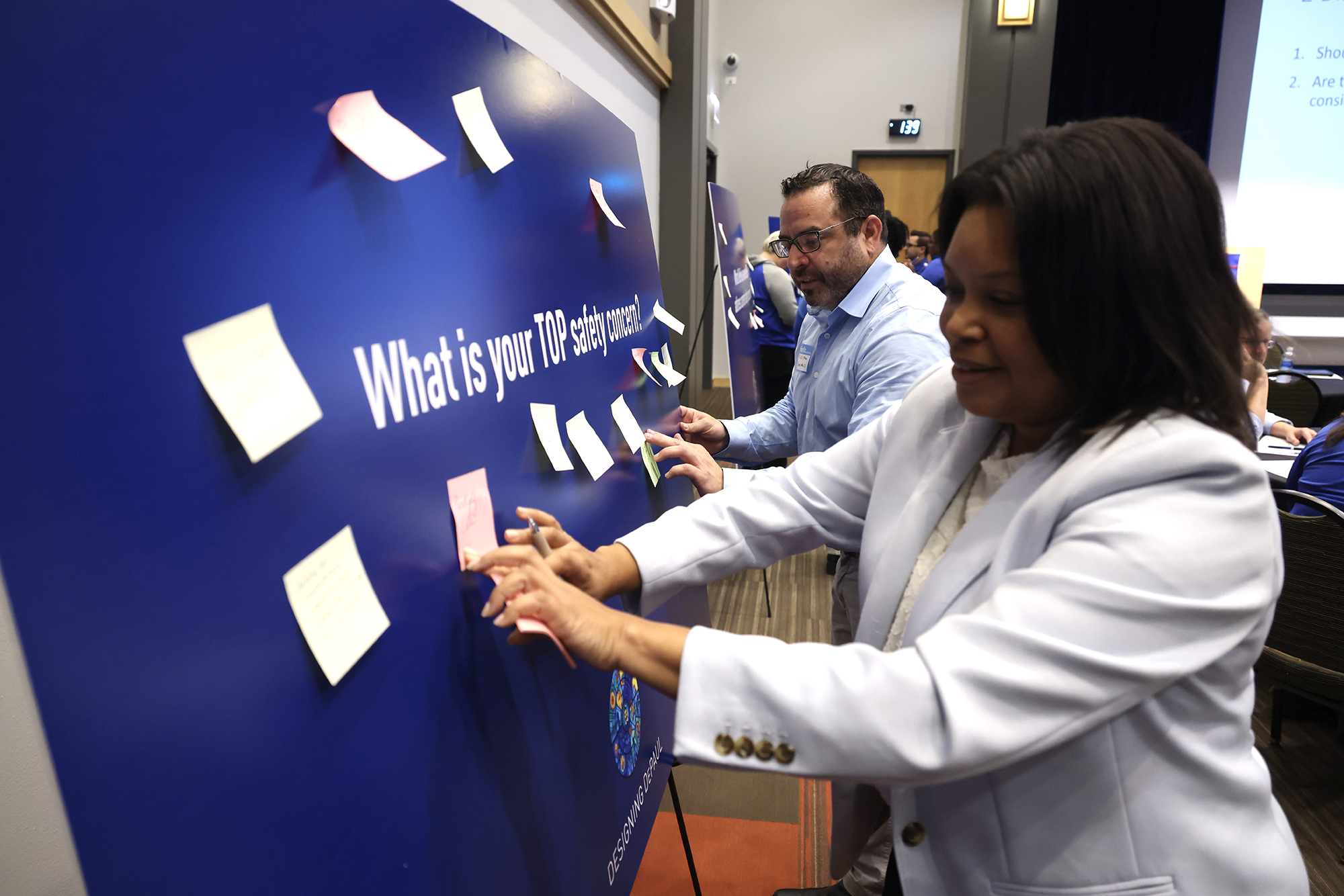
Attendees answered questions on public safety, sharing their experiences and suggestions.
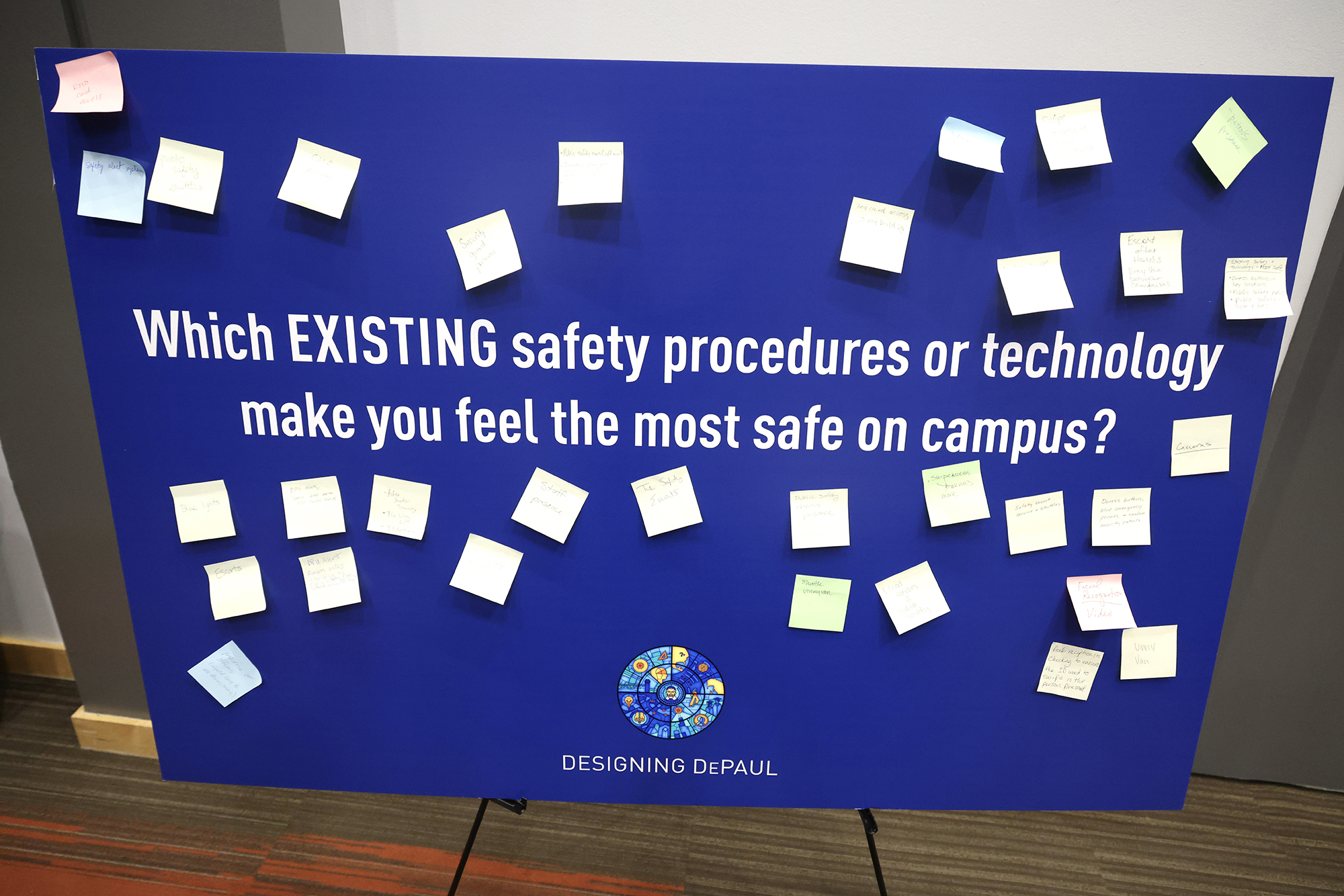
Participants delivered feedback in several formats, and a survey will be sent to the university community to gather more input.